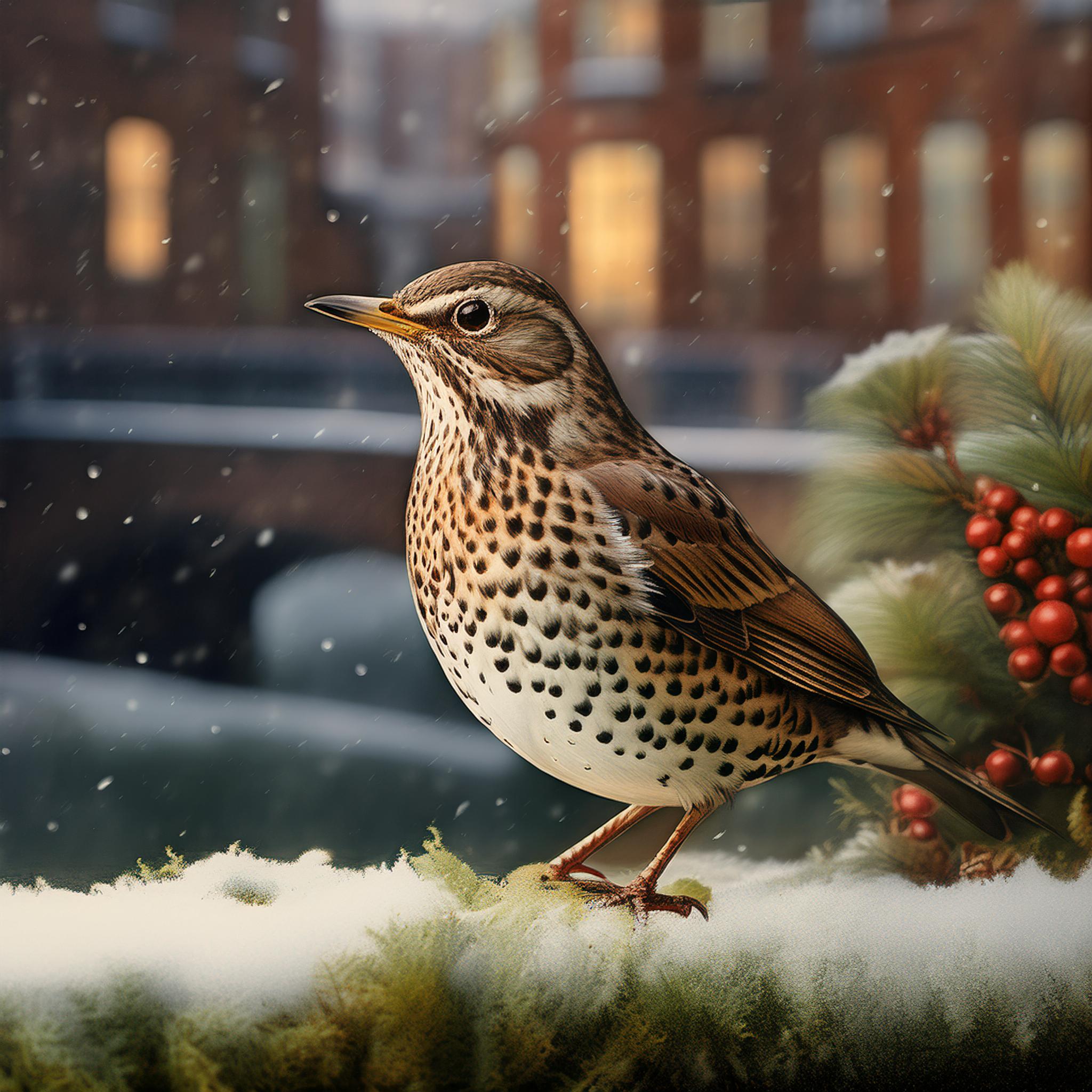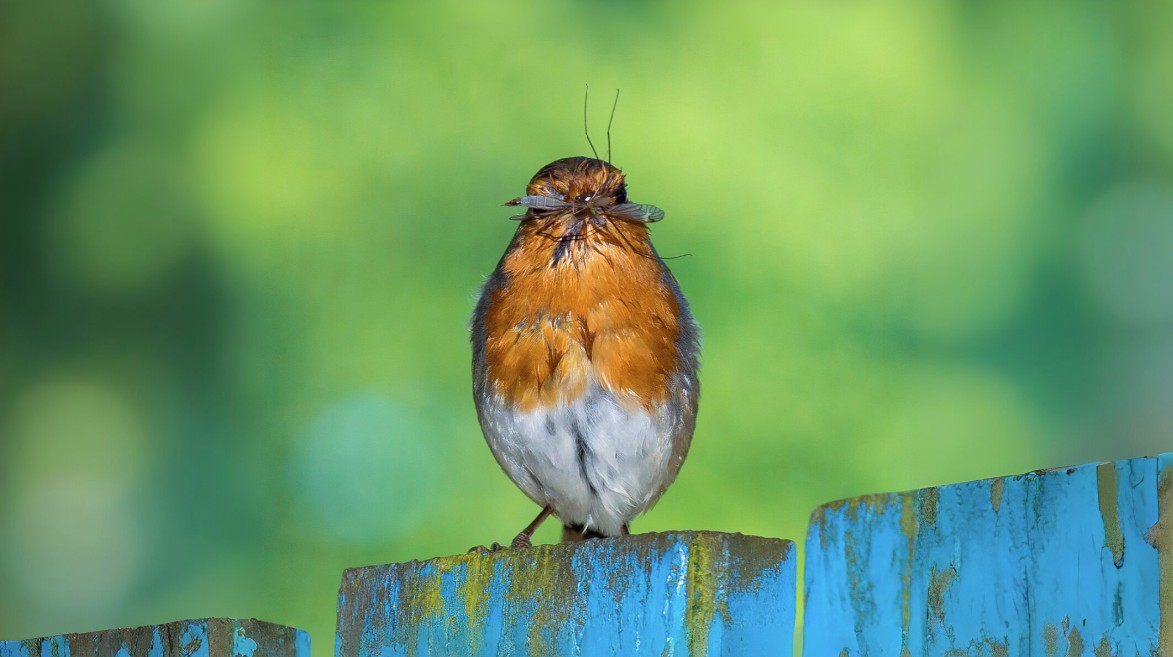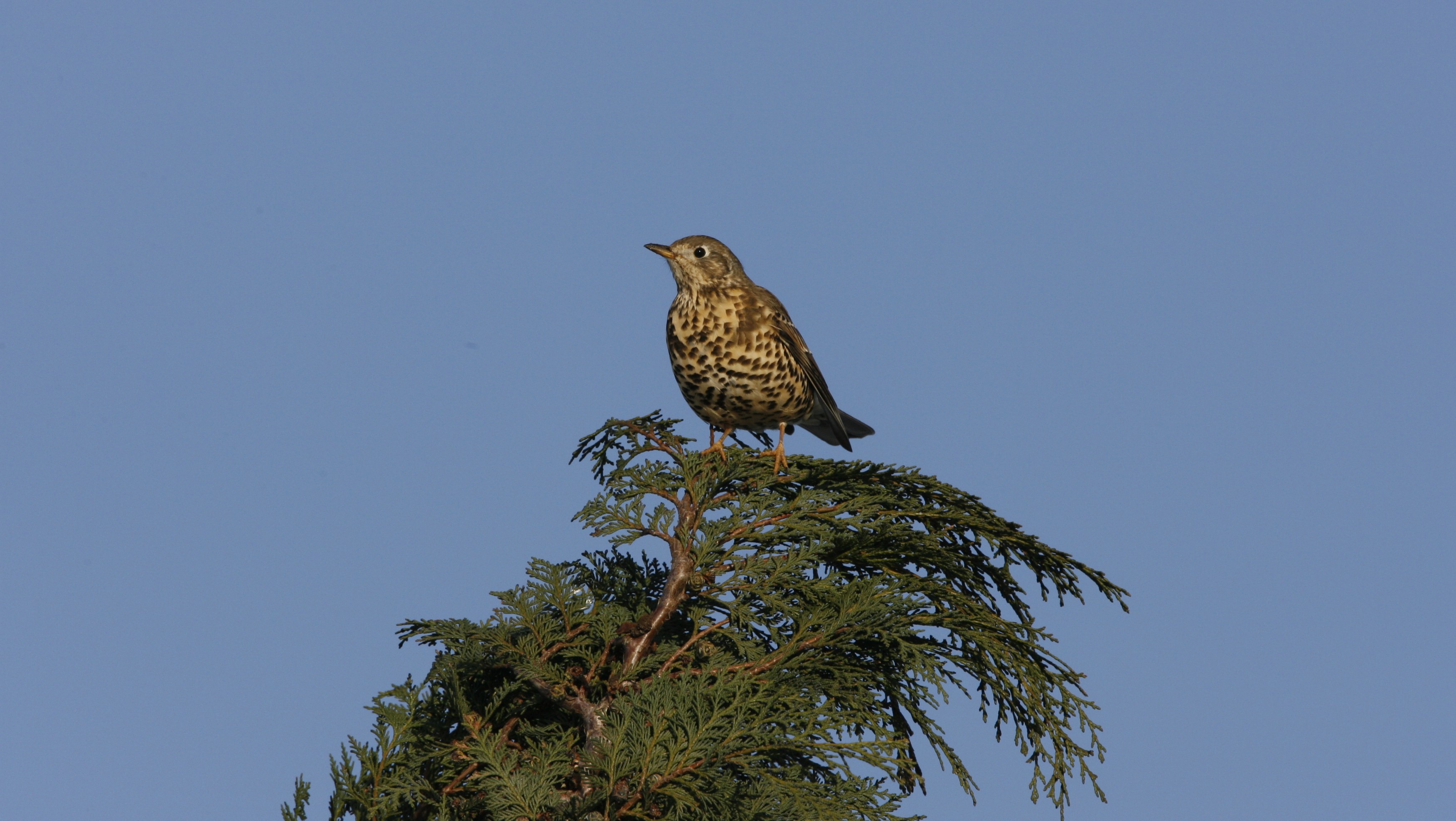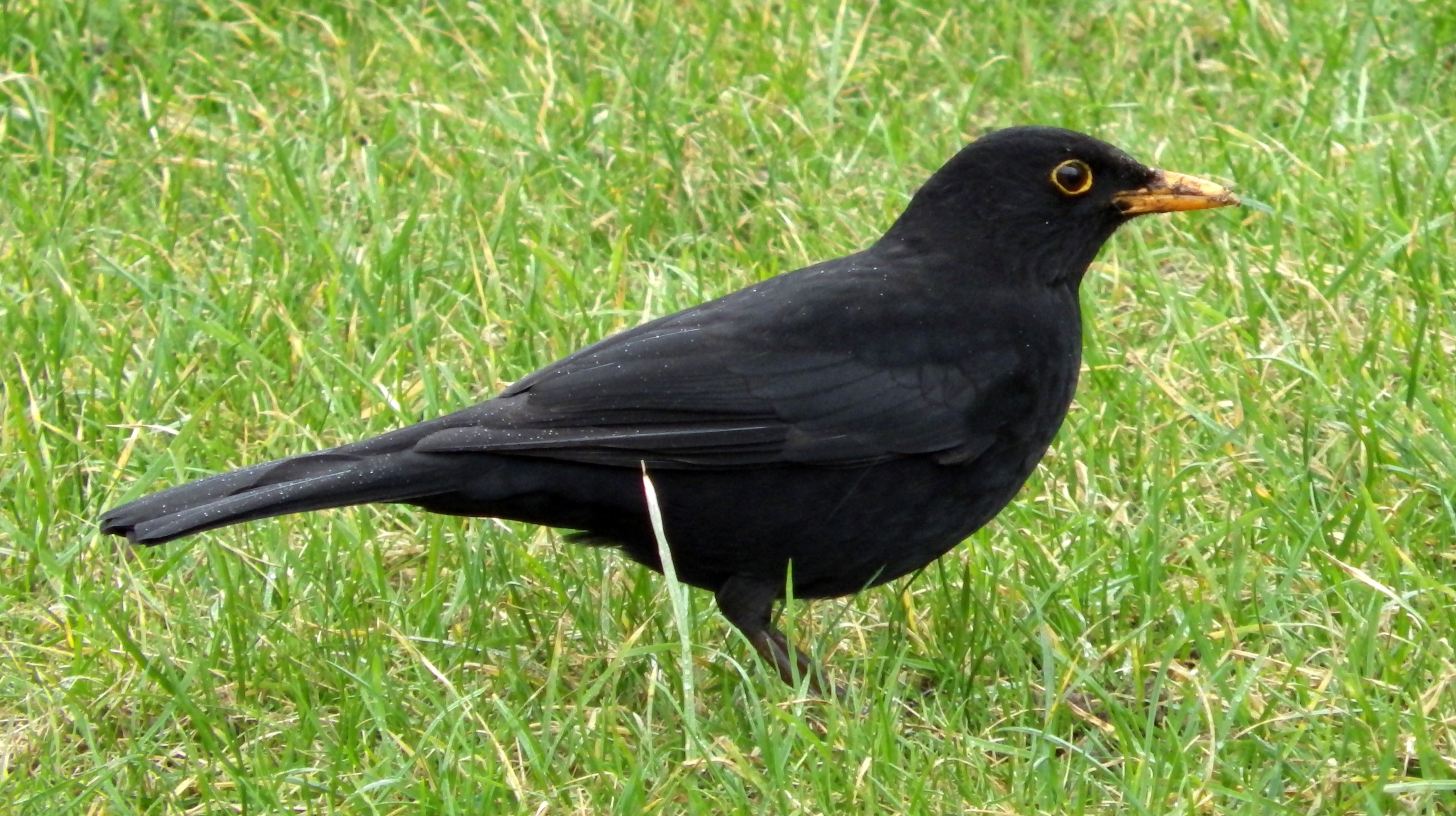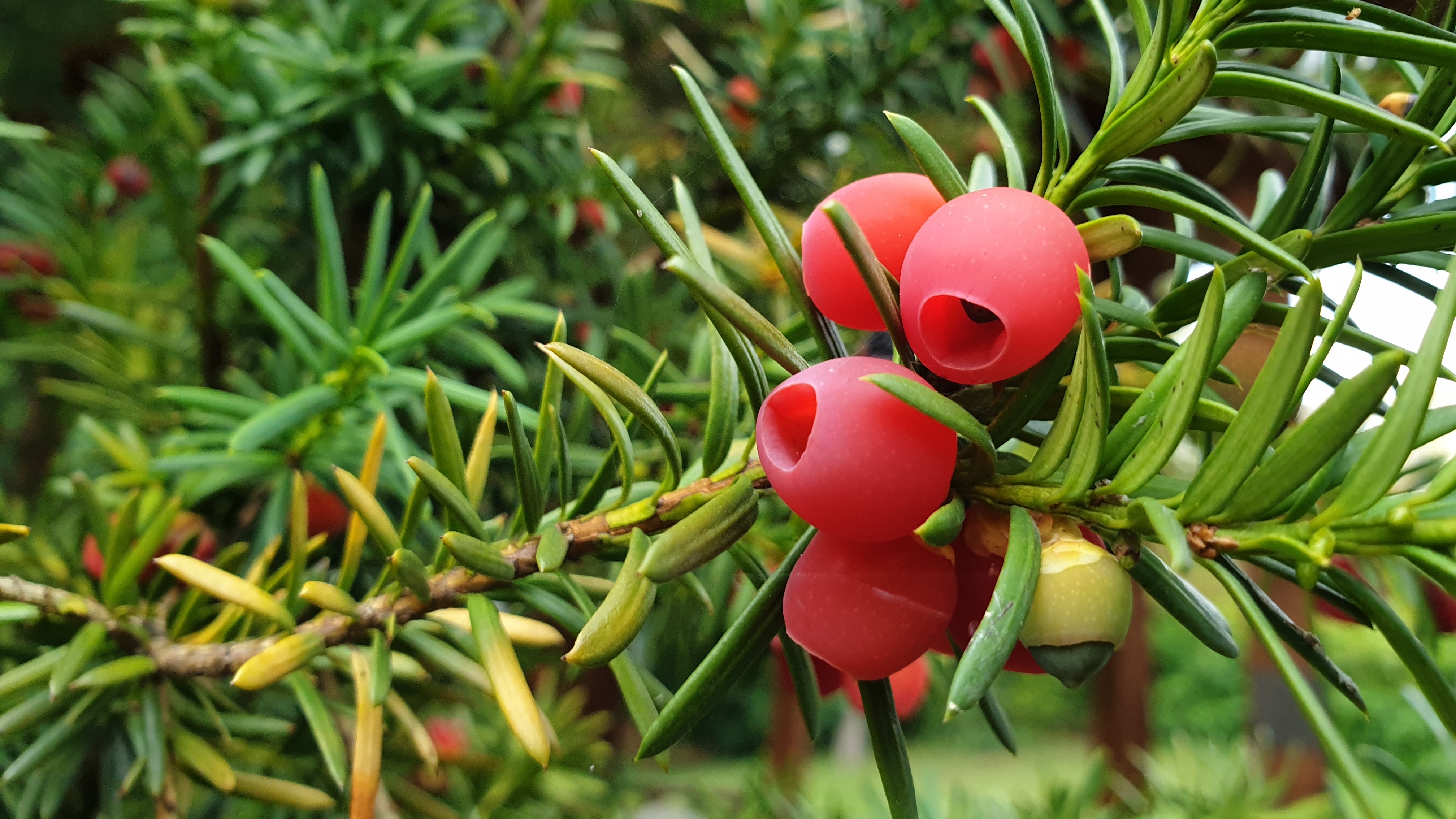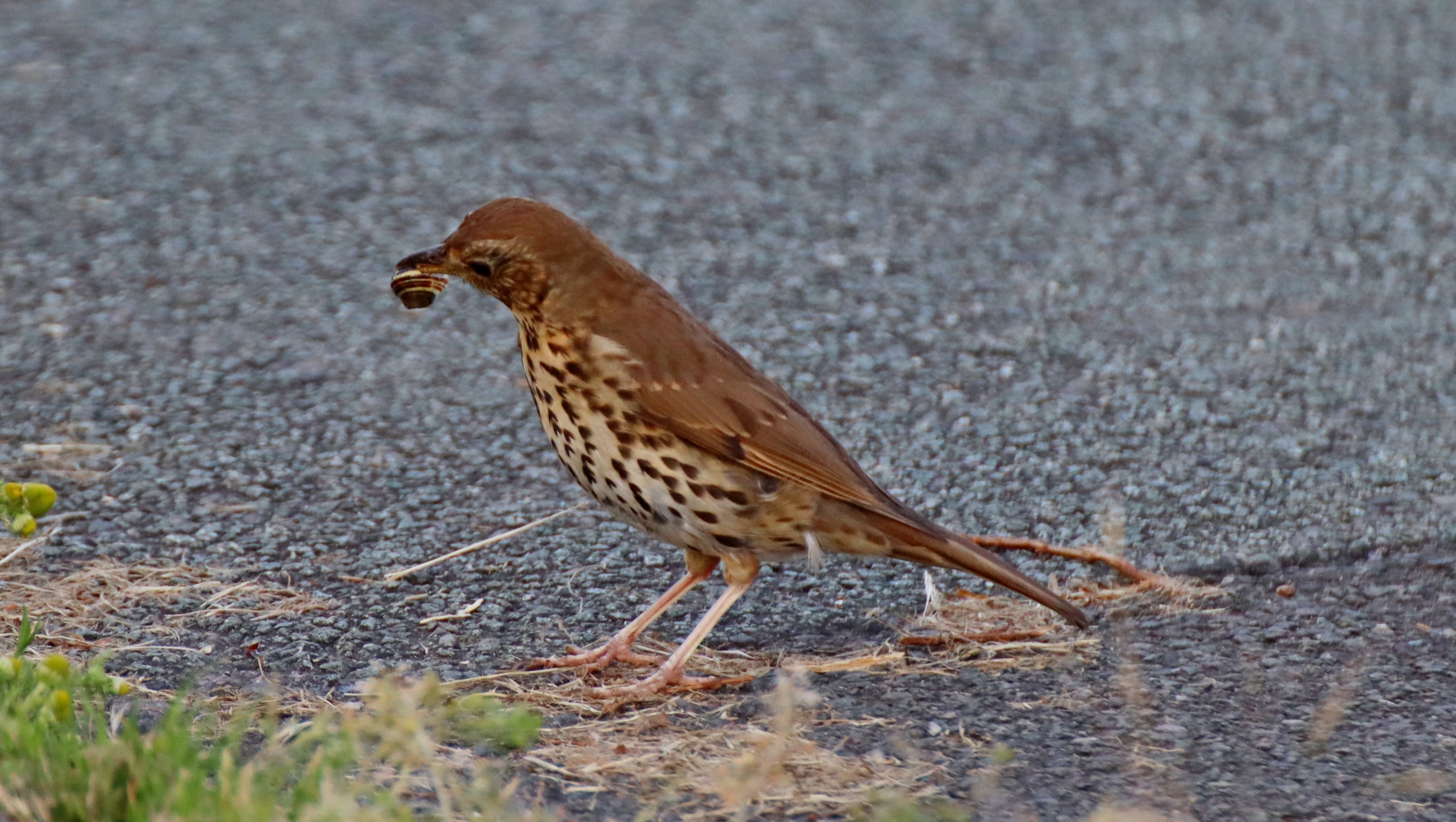There is a uniquely loud wild quality to the voice which distinguishes it from the more relaxed, but similar, blackbird’s song. Blackbirds can be heard occasionally in January in more central areas. Mistle thrushes, in between singing, can be quite aggressive. They will guard a bush which is covered in berries and drive away all other birds that may attempt to feed upon it. They may also already be prospecting for a place to nest and becoming quite quarrelsome with any rivals. In such cases they produce a harsh rattle which is not unlike the sound of a football rattle.
This striking sound is special to the mistle thrush’s vocabulary and is another of the more evocative sounds of the month. These thrushes derive their name from mistletoe because of their love of the berries. However, this is not likely to be our native mistletoe, which the birds show no great preference for, but rather a red-berried Mediterranean species that grows on olive trees.
It was Aristotle in the fourth century who is said to have coined the bird’s name and it seems likely he saw them eating the red berries. Certainly in Britain they are said to prefer red yew berries more than any other and small patches of these half-digested berries are now a common sight, especially along the North downs.
